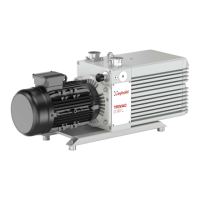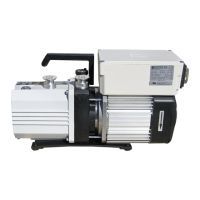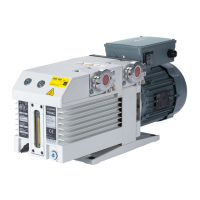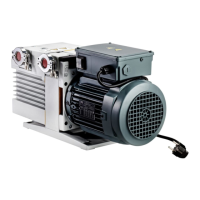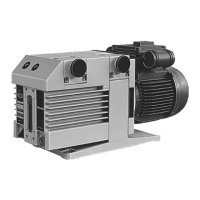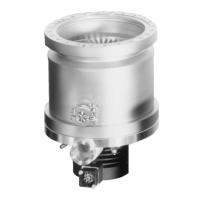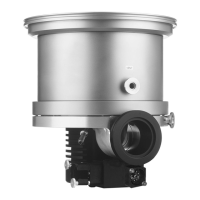32 300598802_002_C0 - 10/2016 - © Leybold
Troubleshooting
6 Troubleshooting
Fault Possible cause Remedy
Repair *
Pump does not start. Wiring is malfunctioning.
Motor protection switch incorrectly set
(three-phase motors only).
Operating voltage does not match motor.
Motor is malfunctioning.
Oil temperature is below 12°C.
Oil is too viscous.
Exhaust filter or exhaust line is clogged.
Pump is seized up
(sign: pump is jammed).
Check and repair wiring.
Set motor protection switch properly.
Replace the motor.
Replace the motor.
Heat the pump and pump oil or use different
oil.
Change the oil.
Replace the filter or clean the exhaust line.
Repair the pump.
-
3.4
5.6
5.6
4.3.3/5.4
5.4
-
Service
Pump does not reach
ultimate pressure.
Measuring technique or gauge is unsuita-
ble.
External leak
1)
.
Anti-suck back valve is malfunctioning.
Exhaust valve is malfunctioning.
Oil is unsuitable.
Vacuum lines are dirty.
Pump is too small.
Use correct measuring technique and gauge.
Measure the pressure directly at pump’s intake
port.
Repair the pump.
Repair the valve.
Repair the valve.
Change the oil (degas it, if necessary).
Clean vacuum lines.
Check the process data; replace the pump, if
necessary.
-
Service
Service
Service
5.4
-
-
Pumping speed is too
low.
Inlet scren in the intake port is clogged.
Exhaust filter is clogged.
Connecting lines are too narrow or too
long.
Clean the dirt trap;
Precaution: install a dust filter in intake line.
Exchange the filter element.
Use adequately wide and short connecting
lines.
5.5
-
3.3
After switching off
pump under vacuum,
pressure in system
rises too fast.
System has a leak.
Anti-suck back valve is malfunctioning.
Check the system.
Repair the valve.
-
Service
Pump gets hotter than
usually observed.
Cooling air supply is obstructed.
Ambient temperature is too high.
Process gas is too hot.
Oil level is too low.
Oil is unsuitable.
Oil cycle is obstructed.
Exhaust filter or exhaust line is obstruct-
ed.
Exhaust valve is malfunctioning.
Pump module is worn out.
Set pump up correctly.
Set pump up correctly.
Change the process.
Add oil.
Change the oil.
Clean or repair the oil lines and channels.
Replace the exhaust filter, clean the exhaust
line.
Repair the valve.
Replace the pump module.
3.1
3.1/4.3.3
-
5.3
5.4
Service
-
Service
Service
Oil in the intake line or
in vacuum vessel.
Oil comes from the vacuum system.
Anti-suck back valve is obstructed.
Sealing surfaces of anti-suck back valve
are damaged or dirty.
Oil level is too high.
Check the vacuum system.
Clean or repair the valve.
Clean or repair the intake port and the anti-
suck back valve.
Drain the excess oil.
-
Service
Service
5.3
Oil is turbid. Condensation. Degas the oil or change the oil and clean the
pump.
Precaution: open the gas ballast valve or fit
separator.
4.3.2/5.4
Pump is excessively
noisy.
Oil level is much too low (oil is no longer
visible).
Silencing nozzle is clogged.
Intake pressure is too high.
Internal demister is clogged.
Coupling element is worn.
Vanes or bearings are damaged.
Add oil.
Clean or replace the silencing nozzle.
Lower the intake pressure.
Clean or replace demister.
Install new coupling element.
Repair pump.
5.3/5.4
Service
-
Service
-
Service
*Repair: Refer to the stated section in these Operating Instructions.
1) Bubble test: The warm pump with degassed oil is running without gas ballast and the intake is blanked off. The exhaust line is led into a vessel
with water. If an evenly spaced line of bubbles appears then the pump has an external leak.
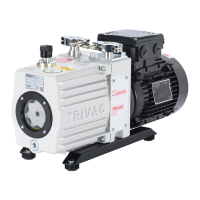
